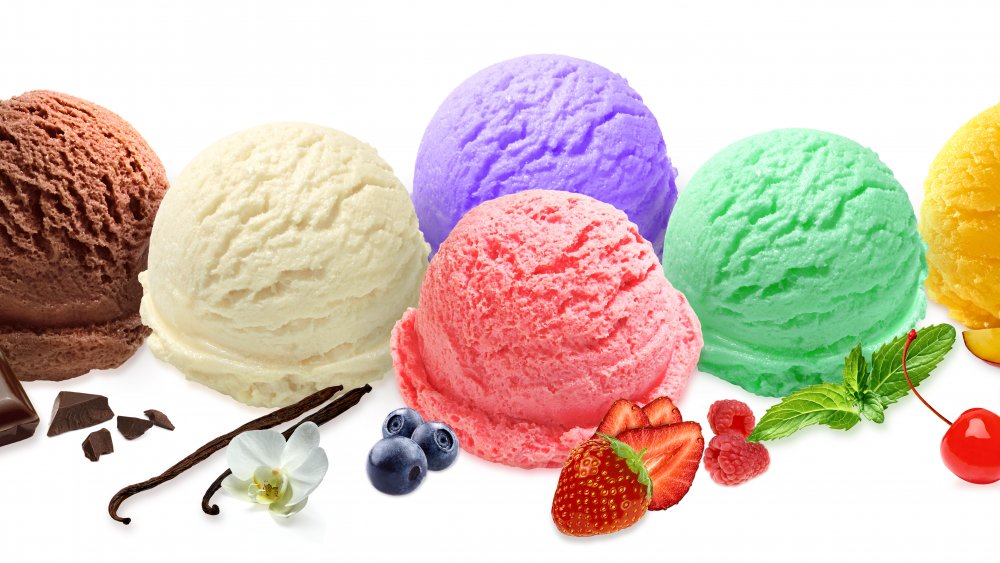The Real Difference Between Custard And Ice Cream
Summer is just around the corner. It's time to dust off the 1920's LP — yeah, they still exist, albeit in antique stores — "I scream, you scream, we all scream for ice scream," and get down for a frozen dessert that makes everyone happy. Ice cream has been a thing since approximately 618-97 A.D. when Chinese King Tang of Shang ordered men to create a treat of buffalo milk, flour, and camphor. Throughout the centuries, Roman emperors, and purportedly even an English king, all had a version of ice cream created to satisfy their love of the frozen dessert (via BBC Newsround). Today, ice cream is an $11 billion business, with the average American consuming more than 23 pounds of ice cream per year (via International Dairy Foods Association). That's a lot of vanilla, chocolate, and cookies and cream ice cream.
Meanwhile, ice cream's cousin, frozen custard, didn't make its debut until 1919 (via Kohr Bros). It was an accidental discovery, but a discovery none the less. Pennsylvania man Archie Kohr had decided to add eggs to his ice cream recipe, and reconfigured his ice cream machine to create the rich and light frozen treat we call custard. Kohr set up a booth on the boardwalk in Coney Island to sell his new dessert, and the rest is history.
How are ice cream and custard different?
Ice cream and custard have a lot in common. Both require only a few ingredients. Basic vanilla ice cream contains cream, milk, sugar, and vanilla (via Food Network). Add in some egg yolks to that recipe, and you have custard (via Allrecipes). Sometimes, ice cream will also contain egg yolks, but the key difference is the percentage of the ingredient.
The Dairy Godmother, a famous frozen custard stop in Northern Virginia frequented by athletes and political leaders like former President Obama, serves up Wisconsin-style frozen custard. The Dairy Godmother notes that the difference between custard and ice cream is that custard has at least 1.4 percent pasteurized egg yolk and at least 10 percent milk fat. On top of that, custard is created in its own special machine.
Ice cream must adhere to its own set of FDA rules to officially be called ice cream. It must contain at least 10 percent milk fat, and milk solids must make up at least 16 percent of ice cream's weight (via Kaleido Scoops). Ice cream can be made using an ice cream machine, or by using a no churn recipe (via David Lebovitz).
Regardless of whether you prefer ice cream or custard, or both, happy summer!

